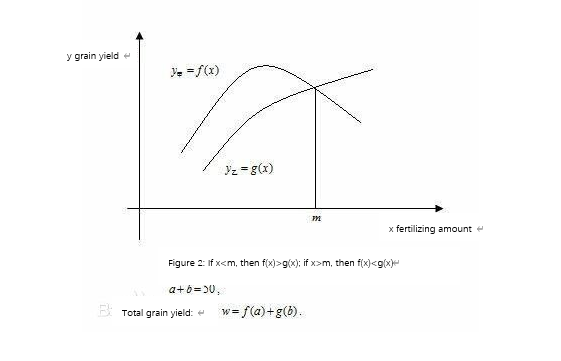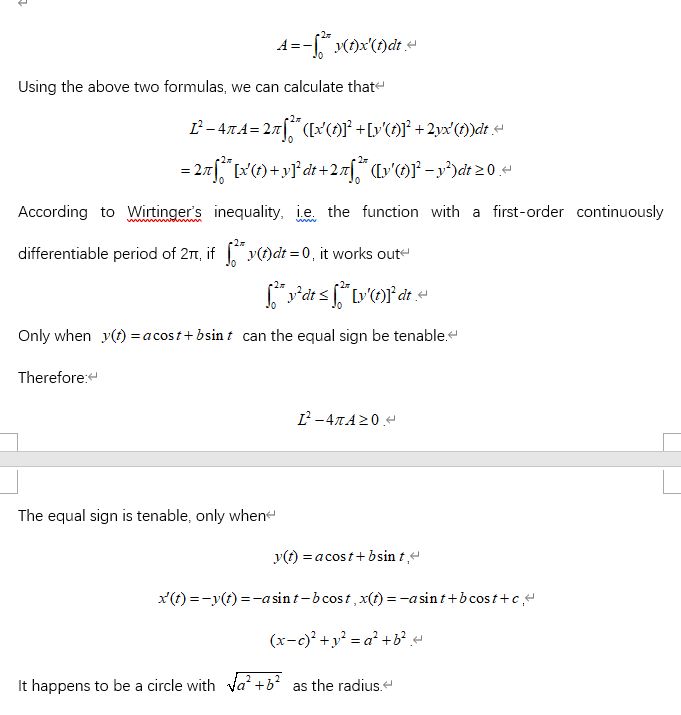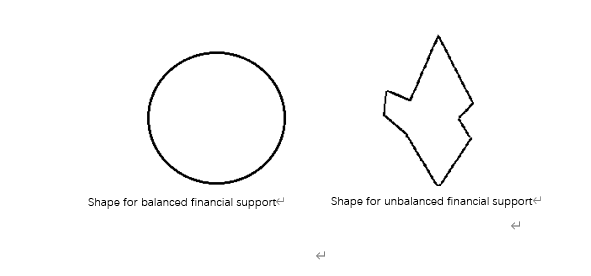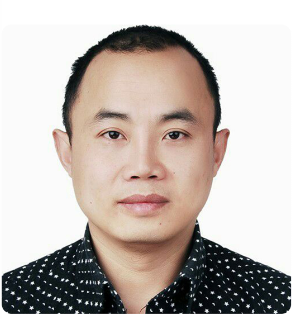Principle of ultimate efficiency equilibrium: fairness is overall efficiency, and efficiency is local fairness
2022-04-11

Principle of ultimate efficiency equilibrium: fairness is overall efficiency, and efficiency is local fairness
——Common prosperity is the inevitable course to the future for the world
By Liu Haofeng
Keywords: Ultimate efficiency Overall fairness Paradox of pursuing local maximum benefits causing overall minimum benefits Isoperimetric theorem Common prosperity Sustainable development
The "principle of ultimate efficiency equilibrium" is the theoretical discovery and contribution of Liu Haofeng, the founder of China's "peace science", in his fifth volume of Principles of Economic Science, i.e. Ideological System of Peace science in 2010. It is a necessary supplment and development and a great transition for the “principle of maximum benefit distribution” (this principle is called the strong hold of economics. Soviet scientists Kantorovich has won the Nobel Prize in economics by discovered it in 1975! Later, Professor Mao Yushi also discovered it.), which is the theoretical contribution made by Professor Mao Yushi, a famous Chinese economist, in the field of microeconomics.
"Rate polar equilibrium principle", as the theoretical basis of macro economy, solves the problem of fairness, and solves the problem of efficiency with the "principle of preferential distribution", the theoretical basis of microeconomics. It is the left and right feet of resource allocation, forming a Tai Chi diagram dynamic model of unity of opposites. The balanced movement of left and right coordination are complete economic movement。
The "principle of ultimate efficiency equilibrium" indicates through rigorous demonstration that the "principle of maximum benefit distribution" pursues supreme local interests and achieves maximum benefits in the field of microeconomics, which leads to overall long-term minimum interests in the field of macroeconomics and finally gets into the paradox dilemma of polarization and periodic economic crisis. The "Nash equilibrium principle" mathematically demonstrates the "prisoner's dilemma", and fully proves Adam Smith's Theory, that is, everyone proceeds from the purpose of self-interest in the market economy, and ultimately the whole society reaches the effect of altruism, which is an untenable paradox. However, the fact is that everyone only proceeds from the purpose of self-interest, which may benefit oneself locally in the short term, must brings a vicious circle of mutual harm to the society in the long term, and eventually leads to a systemic crisis that neither benfits oneself nor benefits others in the whole society. This also proves the argument of Professor Mao Yushi in the Principle of Maximum Benefit Distribution: everyone pursues maximum benefits and finally the whole society achieves maximum benefits, which is not logically tenable. The fact is that everyone pursues maximum benefits, which leads to minimum benefits of the whole society, that is, which leads to polarization and cyclical economic crisis or social revolution.
The "principle of ultimate efficiency equilibrium" states that when resource distribution pursues maximum benefits to the extreme, it is inevitably required to turn to the realization of social fairness and tend toward the equilibrium of the overall system. It puts forward an insightful economic view that “fairness is overall efficiency, and efficiency is local fairness”, so as to realize the logical unification between microeconomics and macroeconomics for the first time, and achieve the dynamic complementary relationship between efficiency and fairness in economic phenomena.
This theory makes a significant contribution, although it is not widely known. However, on December 29, 2018, Liu Haofeng was selected into the 16th annual conference of China Economic Personage and received the only "China Economic and Cultural Innovation Person Award" of the year due to his economic theory called "principle of ultimate efficiency equilibrium" in the "2018 China Economic Summit Forum and the 16th Annual Conference of China Economic Personage" jointly sponsored by China Economic Personage Network, Global Times Newpaper Office, China-Asian Economic Development Association, World China Chamber of Commerce and Industry and other institutions.
Tenable conditions for the principle of maximum benefit distribution and the "paradox of pursuing local maximum benefits causing overall minimum benefits"
In order to completely understand the theoretical value of the "principle of ultimate efficiency equilibrium", we must first understand the "principle of maximum benefit distribution" put forward by Professor Mao Yushi, which is the basic scientific theory on resource distribution and transactions in microeconomics.

"Principle of maximum benefit distribution" takes fertilization distribution as an example. In case of a given chemical fertilizer and two pieces of land, how to distribute it can maximize the grain yield. The two pieces of land are different in size and soil texture (fertile and poor soil). There are 50 kilograms of chemical fertilizer. How can it be distributed on these two pieces of land to maximum the grain yield? According to the "principle of maximum benefit distribution", one kilogram of chemical fertilizer is reduced on land B and added to land A, because this kilogram of chemical fertilizer can make land A yield more grain than make land B yield grain. In order to yield more grain, the chemical fertilizer is continously reduced on land B and added to land A. It turns out that the total grain yield is increased. This reasoning is tenable in terms of local systems.
As the transaction basis of Western microeconomics, the "principle of maximum benefit distribution" put forward by Professor Mao Yushi only settles the problem of local maximum benefits. If we only remain at the micro level, only focus on maximizing our own interests and ignore others’ interests, and can't expand logical domains and extend reasoning, it is inevitable for land A and B to fall into the state of polarization. Let’s suppose A and B are individuals in the whole society. The state of polarization between A and B is the paradoxical pattern of class antagonism. Historical experience exposes that this will lead to a vicious circle of history for the revolution. This phenomenon can be called "the paradox of pursuing local maximum benefits causing overall minimum benefits".
Why do we focus on local short-term interests and ignore overall long-term interests? This is because we analyze and handle the problem in the way of formal logic thinking, suppose that land A and B are relatively independent, and do not dialectically regard those two pieces of land as a whole in terms of soil. It is this choice to pursue local maximum interests that makes land A become more fertile and land B poorer, so as to result in the imbalance of the overall pattern and the outbreak of polarization crisis.
It is a partial opinion for free market economy claiming to address efficiency rather than fairness. In fact, only when ultimate market efficiency turns to social fairness by coordinating and exchanging the cycle between market efficiency and social fairness can market economy avoid cyclical economic crisis and lead to overall efficiency. Only when ultimate social fairness turns to market efficiency by protecting and encouraging differentiated development can market economy avoid rigid economic crisis. The whole and parts, fairness and efficiency, macroeconomic regulatory and market economy are the two legs of the healthy operation and development of social economy, which can not be regarded biasedly.
Logical basis of "common prosperity": why does ultimate efficiency must turn to overall fairness
50 kilograms of chemical fertilizer is to be optimally distributed on land A and B to maximize the benefits. Let’s suppose that it is distributed to land A and B evenly. Generally, if one kilogram of chemical fertilizer is added to land A, land A can yield more grains compared with land B. Therefore, the chemical fertilizer that is supposed to supplying to land B is used on land A, which can maximize the benefits of chemical fertilizer. This is one aspect.
There is the other aspect. When the marginal benefit decreases, we will stop fertilize land A and shall fertilize land B. In a limited system, if there are only two pieces of land named land A and B, we must fertilize land B. In the same curve, if we take land A and B as a correlated whole to analyze them from the perspective of ecosystem or to explain macro problems, the decline of marginal benefit means that chemical fertilizer must be distributed to land B in order to increase the grain capacity of of 50kg chemical fertilizer and the grain yield of the whole land, thus narrowing the grain capacity and gap between land A and land B. Land A and B represent the rich and the poor, and the elite and the civilians. Chemical fertilizer represents the means and methods of national macro-control such as national finance.
This transition is that ultimate efficiency turns to overall fairness to achieve common prosperity. This transition process corresponds to socio-economic ecology, which is a process to constantly change and narrow differentiation. Its policy introduction is required to grasp a quite superb skill. The state can not strangle efficiency in the name of fairness in development, while it should protect effiecient development. Meanwhile, the state should promote social fairness, narrow differentiation and achieve common prosperity through national policy regulation, social welfare and transfer payment.
Governing a country is like cooking a meal. In specific social practice, the state and society shall be prevented from swinging between the left and right extremes, resulting in huge losses of social costs. “There is Yin in Yang, and there is Yang in Yin”, as Chinese cultural philosophy goes. According to the economic situation at different stages, efficiency is gradually developed in the realization of social fairness, and fairness is constantly promoted in the realization of social efficiency.

Value and time significance of the "principle of ultimate efficiency equilibrium"
The reason why Professor Mao Yushi did not discover this truth is that he adopts the discrete analysis method of formal logic, and focuses on micro problems instead of extending this problem into macro problems. If the problem is extended into the social macro problems, there will be a logical paradox. Paradoxes make no sense in the scientific system of formal logic. This is an inherent limitation of his logical thinking mode.
In other words, the conclusion he demonstrates is only applicable to the system he defines. Once beyond his logical domain, there are often paradoxes. The logical domain of this limited system does not completely correspond to the objective society. This domain can only explain some economic phenomena. This also shows that the scientific paradigm and scientific system established by the West relying on formal mathematical logic must be improved by relying on the dialectical logic tools of Chinese philosophy and the way of Heaven, so as to better serve the progress of human civilization.
What does it mean that Professor Mao Yushi did not find the connection between land A and B? It means that pursuing local maximum benefits explains the development mode and history of capitalism and belongs to the category of capitalist economics. He brings social fairness that belongs to the macro field into the category of socialist economics without further thinking about it.
The "principle of ultimate efficiency equilibrium" is discovered, which realizes the logical unification between microeconomics and macroeconomics for the first time, and achieves the complementary and transformational relations of contradictions between efficiency and fairness. It is pointed out that resource distribution partially pursues efficiency and local maximum interests, which will inevitably lead to the cyclical outbreak of western economic crisis.
Its most significant value to the contemporary world is that it reveals the reasons why the capitalist market economy cyclically falls into the dilemma of polarization, resolves the confusion of the cyclical economic crisis that has been obsessing the West and the world, and points out the ways and methods for how to solve this dilemma. This principle is not only conducive to the realization of common prosperity and sustainable development in the world, but also provides scientific basis and theoretical support for building a community of common destiny for all mankind. Therefore, the "principle of ultimate efficiency equilibrium" is a fundamental epoch-making breakthrough in the field of world economic theory.
Chinese philosophy and mathematical basis of the "principle of ultimate efficiency equilibrium"
The principle of the way of Heaven contained in the "diagram of the universe" that is the core wisdom of Chinese philosophy, reveals that everything works according to dialectical principles. In the process of "establishment, continuation, destruction and disappearance", everything will turn into its opposite and collapse. The principle that “things turn into their opposites when they reach the extreme” is also deeply reflected in the process of nature and resource distribution. The dialectical logic contained in diagram of the universe corresponds to the objective movement attributes of nature and society, adapts to contradictory relations, and meets the requirements of complex organic system for logical tools; It controls formal logic tools and provides a universal and effective method for resource distribution.
The "principle of ultimate efficiency equilibrium" is not only the transaction basis in microeconomics, but also is applicable to macroeconomic principles. In fact, the rich do not always create maximum benefits in life. The visible hand of the government should protect the rights and interests of the rich and encourage the rich to take the initiative to engage in public welfare and charity. In order to prevent the rich from reducing output caused by the increase of resources, the state should transfer more resources to assist the poor through regulation, provide the poor with opportunities to receive public education and modern industrial skills, and promote the poor to gradually develop into the rich.
However, at the level of social fairness, the state encourages some people and regions to be prosperous at first who drive others become prosperous, and finally achieves common prosperity, which mainly depends on the macro-control and transfer payment from the government. The government can't shirk its main responsibility and responsibility subject position. The rich rely on personal spiritual awakening and moral cultivation. The public one is handed over to the state, the competitive one to the society, the responsibility for fair development to the government, and the responsibility for pursuing efficiency to the market. They can't be put on the wrong places.
Then the public products for the realization of social fairness are medical services, education, elderly care and even housing. When a country can reach complete industrial division of labor and capacity enough to build a self-fulfilling organic recycling system, the country can have various ways to achieve a more elegant and civilized housing level that reflects the requirements of common prosperity through regulation. Finally, the country achieves reasonable differences and overall equilibrium, and realizes a society of common prosperity with "the largest spherical volume and circular area" in mathematics.
The widespread application of the "principle of ultimate efficiency equilibrium" can bring the society back from the low efficiency of polarization and the edge of system crisis, continuously realize the maximum utilization of resources, and draw closer to the overall social fairness, so as to narrow the capacity gap between land A and B, tend to become balanced, and realize a higher-level fairness pattern of the system.
The overall prosperity of a country is equal to the volume of the country, which is reflected in the diameter and space of the sphere, as well as in the density and mass of the sphere. Differentiated competition can expand the volume and diameter of the country. However, in order to prevent the system from collapsing, the country should follow the "principle of ultimate efficiency equilibrium" at the time of polarization and activate the left leg of fairness in time, so as to gradually improve and perfect the national system and realize the common prosperity of the society.
Common prosperity: mathematical proof of maximizing national economic benefits
According to the deduction for the principle of ultimate efficiency equilibrium, the country can build a reasonable difference and overall equilibrium, and realize a society of common prosperity with "the largest spherical volume and circular area" in mathematics. The country also can get rigorous mathematical proof of maximizing national economic benefits. Let’s suppose that the total financial investment of the country at a certain stage is taken as a finite closed curve C. Under what circumstances will it achieve maximum return and economic and social benefits? The following argument reveals that this closed curve is surrounded by a circle, which maximizes benefits. Therefore, under what circumstances can we get a circle? The law of physics reveals that it is balanced investment.
Let’s suppose that the closed curve C has perimeter L and A is the area of the plane figure surrounded by L.


This is the “isoperimetric theorem” of two-dimensional plane. For the closed geometric shapes with equal perimeter in the isoperimetric theorem, the area of circle is the largest.
On a two-dimensional plane, if the perimeter of the closed geometric shapes is given, the area of circle is the largest; if the area of the closed geometric shapes is given, the perimeter of circle is the smallest. In a three-dimensional space, if the surface area of the closed solid geometric shapes is given, the volume of sphere is the largest; if the volume of the closed solid geometric shapes is given, the surface area of sphere is smaller than that of other shapes (such as square, cylinder, etc.), the force of sphere is uniform, and sphere will be more firm.
In physics, if the forces acting on a closed curve in all directions are balanced, the closed curve must generate a circle. If the force acting on a closed curve in one direction is large and the force acting on a closed curve in another direction is small, the closed curve must generate a slender and flat figure.
In the field of national economy, if the country provides balanced financial support, that is, if the forces acting on a closed curved in all demensions are balanced, the closed curve must generate a circle, which proves that realizing common prosperity is to maximize the overall interests of the whole society!
If the country provides unbalanced financial policies and support, that is, if the forces acting on a closed curve in some directions are large and he forces acting on a closed curve in some directions are small, the closed curve must generate a slender and flat figure. For example, the country tends to provide great financial support for large enterprises and state-owned enterprises with good benefits, while it provides little financial support for micro, small and medium-sized enterprises; For another example, the banks tend to provide great support for the rich with bank deposits, while they completely ignore providing financial support for the poor for skills and entrepreneurship. As the national economy develops, it is inevitable for the country to lead to a polarized society and the outbreak of economic crisis and even social revolution, fall into a vicious circle of history, and finally minimize the overall interests!
The European and American capitalist countries operate their finance in such a way. After developing for a certain period, those countries are bound to experience an economic crisis, causing huge losses to the society. They will expand and invade outward to fill the internal gaps of their system by enlarging their domains and geographical maps in the logical sense, which brings instability and conflict to the world and plunges the world into unsustainable development.

The road to common prosperity shown by the principle of ultimate efficiency equilibrium is not only the inevitable expansion of the current socialist cause, but also the transition and improvement of capitalist civilization. It transcends the two social types and points out the goal commonly achieved by the world in the future. Only when the whole society achieves common prosperity can the world realize sustainable peace and long-term common development.
Therefore, the "principle of ultimate efficiency equilibrium" clears the way for promoting the global village to realize the sustainable development of common prosperity, harmony and peace in the world, and for better building a community of common destiny for all mankind. Its discovery scientifically demonstrates that the road to common prosperity for the country or the world is the inevitable course for history and the times.

Born in Hunan Province, China; founder of harmonious theory.l Ideologist, philosopher, critic, artist, writer, chief contributor of journalist, director of newspaper office and managing editor.l Members of the Chinese Society of Logic and the Chinese Society for Dialectics of Nature.l Academic direction: modernization and globalization of Chinese culture.l Academic achievements: mathematically crack the secret of “the theory that man is an integral part of nature”, the highest wisdom of Chinese culture, demonstrate the "unity of all religions" with mathematical logic, and transform the logical opposition between Chinese and Western cultures into a complementary relation. Discover the "principle of ultimate efficiency equilibrium" in economics.l Received the only "China Economic and Cultural Innovation Person Award" in the 2018 annual conference of China Economic Personage.l Works: China's Economy and People's Life in the WTO, Taking Internet as Home, Anthology of Chinese Cultural Renaissance (three volumes), Introduction to Harmonious Theory, Principles of Aesthetic Science, Promotion of the World Renaissance, Darkness and Day (Trilogy), Harmonious Theory - Inheritance and Innovation of Chinese Culture.l Published millions of words on news, current politics, literary and philosophy.l Outstanding Contribution Person for World Culture and United Nations Outstanding Contribution Award for Oriental Culture in 2017.

